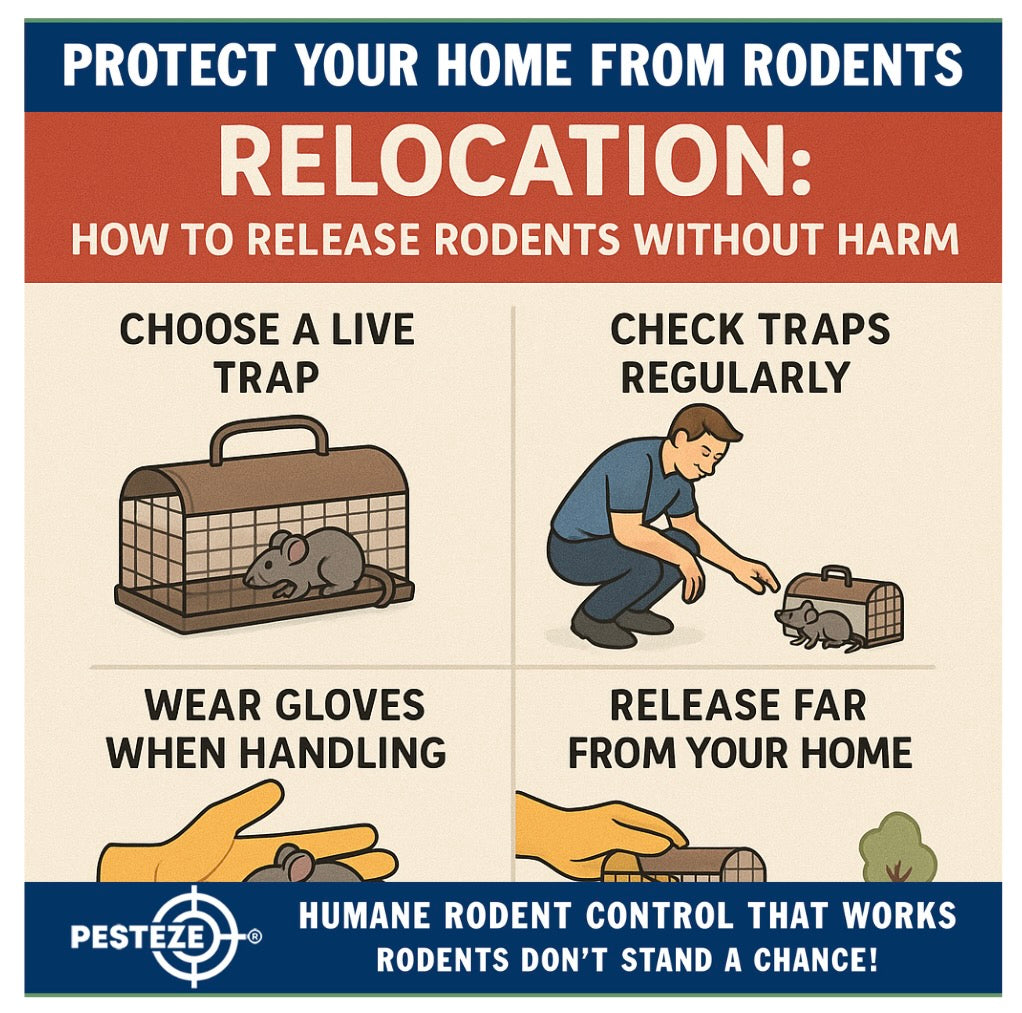SAFE MOUSE & RAT RELOCATION: HOW TO RELEASE RODENTS WITHOUT HARM

SAFE MOUSE & RAT RELOCATION: HOW TO RELEASE RODENTS WITHOUT HARM
SUMMARY
Caught a mouse or rat in a live trap? Don’t panic—relocating them safely and humanely is easier than you think. Learn best practices for releasing rodents responsibly, minimizing stress for the animals and preventing re-entry into your home.
FEATURES
- Use the Right Trap: Choose a well-ventilated, escape-proof live trap.
- Check Traps Often: Prevent stress or injury by checking traps every few hours.
- Wear Gloves: Protect yourself and the animal during handling and release.
- Pick a Safe Release Spot: Relocate rodents at least 2–3 miles from your home.
- Release at Dusk or Dawn: Choose quiet hours for safer rodent re-entry into nature.
- Seal Entry Points: After relocation, rodent-proof your home to prevent returns.
DESCRIPTION
Using live traps is one of the most humane methods of rodent control, but what you do next matters just as much. Safely relocating mice and rats ensures their survival and keeps them from returning to your home.
Start by selecting the right trap—it should be well-ventilated, durable, and escape-proof. Make sure it’s appropriate for the size of the rodent you're trying to catch. Avoid overcrowding traps or using ones that can harm the animal during capture.
Check your traps frequently, ideally every few hours. Rodents can become extremely stressed when confined, and prolonged exposure without food or water can be fatal. Checking regularly also allows you to act quickly once a rodent is captured.
When handling a trapped rodent, always wear gloves to protect yourself and reduce the risk of disease transmission. Gloves also help mask your scent, which can keep the rodent calmer during the process.
Next, choose a safe, distant release location. Look for wooded areas, overgrown fields, or natural brush piles at least 2–3 miles from your home. This distance helps prevent the rodent from navigating its way back to your property.
Release at dawn or dusk, when it's quieter and safer for the rodent to find shelter. Open the trap slowly and give the rodent space to exit on its own without forcing it out.
After releasing the rodent, take preventive action by sealing any holes, cracks, or entry points around your home. Clean up food sources and remove nesting materials to avoid attracting new visitors.
Relocating rodents can be done responsibly with a little care and preparation—protecting both your home and the animals involved.
- Nikita Gulrajani


Comments 0